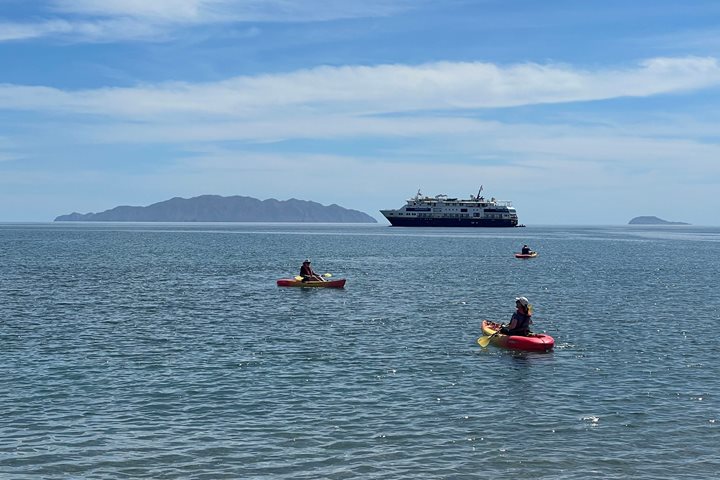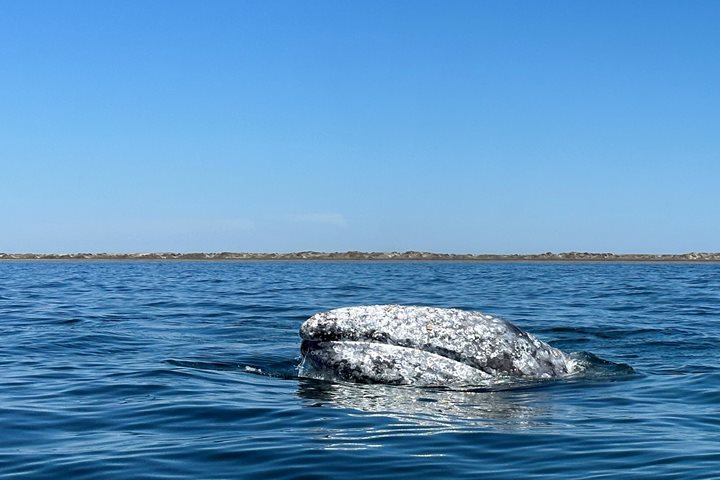Long before sunrise, several of us gathered on deck to watch the deployment of an oceanographic instrument that takes samples of water at different depths to measure the amount of dissolved oxygen. This is part of the research that Dr. Bill Gilly, from Stanford University-Hopkins Marine Station, has been doing to study the Oxygen Minimum Zone in the Sea of Cortez, funded by a grant from National Geographic. We observed as crewmembers lowered the instrument to 1,500 feet below the surface and discussed about marine productivity, squid, sharks, and many other interesting topics. And as the instrument was being retrieved, we watched a magnificent green flash as the sun raised!
The National Geographic Sea Bird arrived to Los Islotes during breakfast and we got ready to visit the local residents. We boarded our expedition landing craft and got close views of the California sea lions, blue-footed and brown boobies, frigatebirds, and pelicans that call these guano-covered rocks home. Located inside the Espiritu Santo Island-complex Biosphere Reserve, Los Islotes is home to the southernmost breeding colony of California sea lions in the Baja California Peninsula; there are around 300 of them and their calls, coughs and sneezes fill the air. But sea lions should be seen underwater in order to fully appreciate their grace and perfect adaptation to the marine environment, and we went snorkeling with them. The 72o F water was very clear and we were able to watch the abundant reef fish below, while admiring the speed and agility of the sea lions around us. What a pleasure!
During the afternoon we sailed south to a beautiful bay located on the south end of Espiritu Santo Island called Bonanza Bay; there we explored the desert and searched for the endemic black jackrabbit, kayaked, and snorkeled. And after all that exercise and excitement, we enjoyed a delicious dinner ashore. And while we listened some great stories told after a bonfire, the sky slowly filled with countless stars and a wonderful day came to an end.







